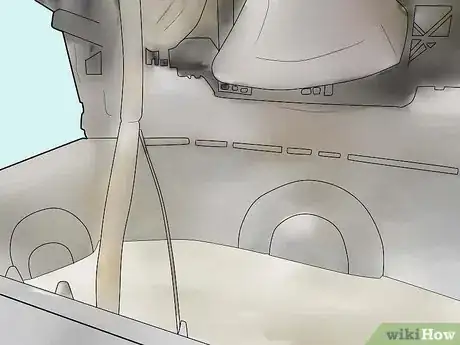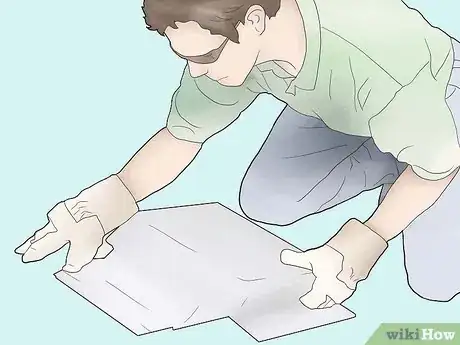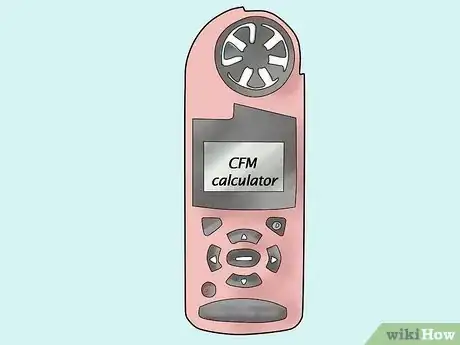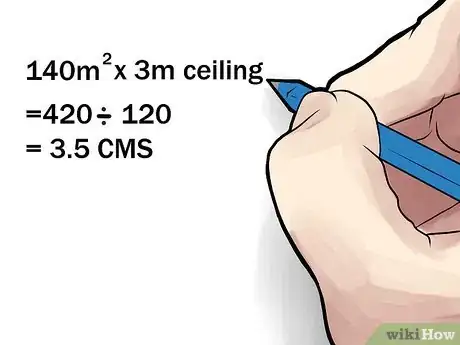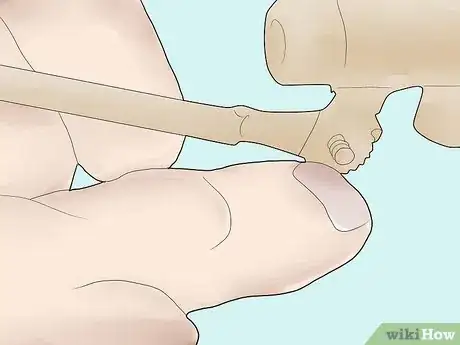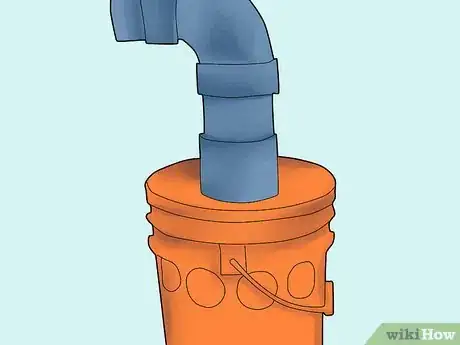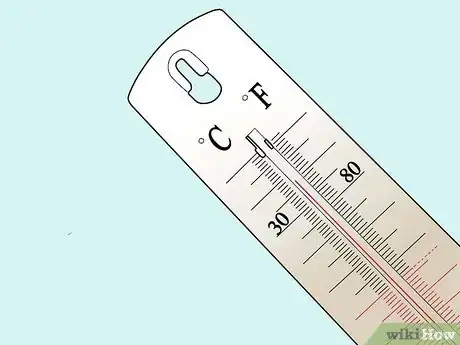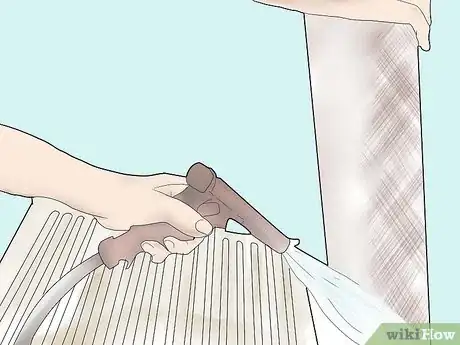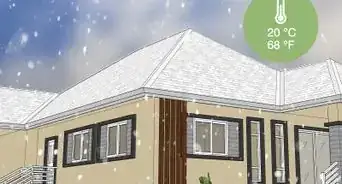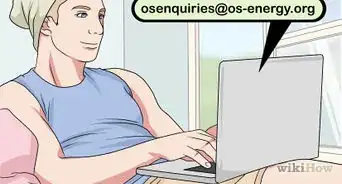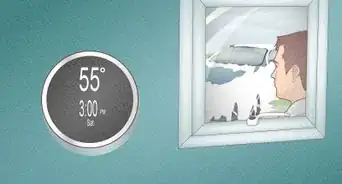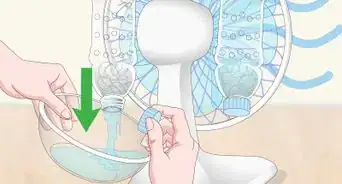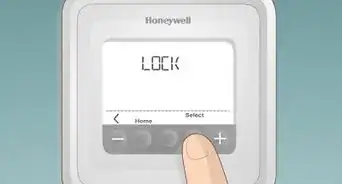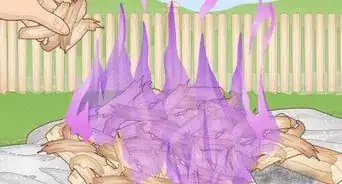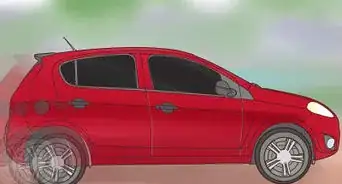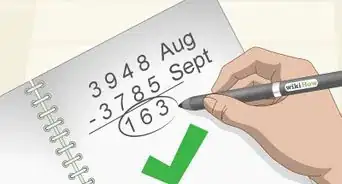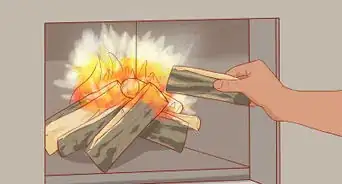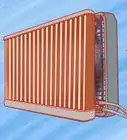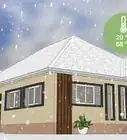wikiHow is a “wiki,” similar to Wikipedia, which means that many of our articles are co-written by multiple authors. To create this article, 32 people, some anonymous, worked to edit and improve it over time.
This article has been viewed 516,525 times.
Learn more...
If you live in a dry climate, swamp coolers (a.k.a. evaporative coolers) are a great way to stay cool when the weather turns your home into an oven—and they are much less expensive than the typical hydro fluorocarbon-based air conditioner. Use these steps and tips to keep your home cool while using a swamp cooler.
Steps
Is A Swamp Cooler Right For You?
-
1Check the average humidity in your area. Evaporative coolers work best with very low relative humidity and hot temperatures. If the average humidity in your area is 40-50%, an evaporative cooler will not work properly.
-
2Check your water supply. Your swamp cooler will need a lot of water—as the name implies, it works by evaporation, so make sure you have plenty to go.[1]Advertisement
-
3Assess your house ventilation. Swamp coolers will increase the humidity in your home significantly, so you need to have very good ventilation. Homes built for evaporative coolers will have the ductwork in place, but for most retrofit installations, you'll want windows opened. I know, you grew up with your dad telling you "close the windows, we aren't cooling the neighborhood," but with swamp coolers that's exactly what you want to do!
How Much Swamp Cooler Do You Need?
-
1Calculate your CFM rating. Swamp coolers are rated by how much air the cooler can move, and is measured in cubic feet per minute (CFM).[2]
-
2Use this formula to calculate the CFM needed to cool your home:[3]
- Determine the area of the space you want to cool.
- Multiply this figure by the height of your ceilings.
- Divide that number by 2 (120 for European measurements).
- The result is the CFM rating for the evaporative cooler you need.
- For example: If you have a 1,500 square foot home with 8 foot (2.4 m) ceilings:
- 1,500 square feet x 8 feet (2.4 m). ceilings = 12,000 ÷ 2 = 6,000 CFM.
- You need a unit rated at 6,000 CFM or higher.
- Example 2, in CMS (cubic meters per second): If you have a 140m2 home with 3m ceilings:
- 140m2 x 3m ceiling = 420 ÷ 120 = 3.5 centimeters (1.4 in).
- You need a unit rated at 3.5 centimeters (1.4 in) or higher.
Install Your Swamp Cooler
-
1Purchase an evaporative cooler. Make sure that it's rated at least the minimum CFM (CMS) that meets your requirements.
-
2Set it up. Different types are installed different ways. Your dwelling may be pre-fitted for installation, and if so—install there.[4]
- Swamp coolers are most efficient on the roof: cool air sinks, after all. But there may be issues with placement, leakage, or supply that prevent that.
- Consider portable evaporative coolers. They are also available in-wall or window-mounted.
- Make sure you follow the manufacturers instructions completely to maximize the output of your swamp cooler.
-
3Create a "vent" to direct the cool air through the house. e.g. During the day open a window in the living room an inch or two and close the bedroom doors to cool the space you're using and cool less space. At night close the living room window and open one in each bedroom that will be used. Remember open the windows just a crack to direct air out without letting hot air in. Venting also prevents moisture build-up in your house will not only reduce the efficiency of the swamp cooler, it could also cause indoor humidity to run out of control and damage furniture, books, or musical instruments. This is because swamp coolers use moisture to cool the air. When there is too much moisture, the temperature won't change as much.[5]
-
4Wait until it's 85°F (30°C) or higher outside. Believe it or not, swamp coolers operate the best when it's warmer. The evaporation mechanism is most efficient when there is a significant difference between the cooling pads, the water, and the air, and as long as the outdoor relative humidity is less than 30%.[6]
-
5Clean the filter regularly. The water filter for the swamp cooler cleans out any impurities for maximum evaporation. When the filter is clogged, these impurities will get through and evaporation will slow, or stop altogether.[7]
- If that's not enough to motivate you, consider why the evaporative cooler bears the euphemistic name swamp cooler. Early units had a problem with algae growth, and the resultant odor would make an alligator feel right at home.
Community Q&A
-
QuestionShould I close the windows in a swamp cooler home to make it cooler?
 Community AnswerNo. You don't want the house to be completely closed off. Open the window by just an inch in every room you want the cooler to affect. Air flow is a key component in making a swamp cooler work. Closing off all the windows will only make it very humid (and possibly hotter) in your house.
Community AnswerNo. You don't want the house to be completely closed off. Open the window by just an inch in every room you want the cooler to affect. Air flow is a key component in making a swamp cooler work. Closing off all the windows will only make it very humid (and possibly hotter) in your house. -
QuestionThis year the air flow of my swamp cooler seems very low. How do I find out what is wrong?
 Community AnswerAs part of your regular yearly maintenance, you should inspect the filter material (pads) to make sure it isn't plugged up with mineral deposits. I replace my pads at the beginning of each season as part of getting it ready for the summer. You should also inspect your blower (the squirrel cage) as part of the seasonal inspection to make sure it is clean and free of dirt and other buildup. I use a soft bristle brush or wire brush and vacuum to clean these as needed. Please note you'll want to turn off the breaker to your cooler before attempting any routine maintenance.
Community AnswerAs part of your regular yearly maintenance, you should inspect the filter material (pads) to make sure it isn't plugged up with mineral deposits. I replace my pads at the beginning of each season as part of getting it ready for the summer. You should also inspect your blower (the squirrel cage) as part of the seasonal inspection to make sure it is clean and free of dirt and other buildup. I use a soft bristle brush or wire brush and vacuum to clean these as needed. Please note you'll want to turn off the breaker to your cooler before attempting any routine maintenance. -
QuestionDo I have to rerun the pump that I ran in the morning when I decide to turn on a swamp cooler later in the afternoon?
 Community AnswerYes. When the unit needs to cool, you need water on the pads and that means you need the pump to wet the pads. Otherwise, you're just bringing in outside air and not cooling the air.
Community AnswerYes. When the unit needs to cool, you need water on the pads and that means you need the pump to wet the pads. Otherwise, you're just bringing in outside air and not cooling the air.
Warnings
- Do not operate a swamp cooler and air conditioner at the same time. They use two different processes, and are essentially performing opposite tasks. Cooling may occur, but it will put unnecessary load on your air conditioner which will make your electricity bill much higher than it needs to be.⧼thumbs_response⧽
Things You'll Need
- Swamp cooler
- Water
- Electricity
- Hot, dry days
References
- ↑ http://www.allianceforwaterefficiency.org/evap_cooling_intro.aspx
- ↑ https://www.sylvane.com/swamp-cooler-buying-guide.html
- ↑ https://www.captiveaire.com/CATALOGCONTENT/EVAPCOOLER/EVAPORATIVECOOLERFORMULAS.asp
- ↑ https://www.youtube.com/watch?v=mHL__h2DW20
- ↑ http://www.homeenergy.org/show/article/id/1211
- ↑ https://www.newair.com/blogs/learn/evaporative-cooler-humidity-chart
- ↑ https://www.newair.com/blogs/learn/evaporative-cooler-humidity-chart
About This Article
To make the air colder in a swamp cooler, try cleaning out the filters inside, which will make the cooler operate more effectively. Also, leave the windows inside your house open 1-2 inches when you're running the swamp cooler since there needs to be some airflow for the cooler to work properly. You may also want to wait until it's at least 85 °F out before you run the cooler since swamp coolers are designed to work best when it's hot outside. To learn how big of a swamp cooler you need for your home, keep reading!

